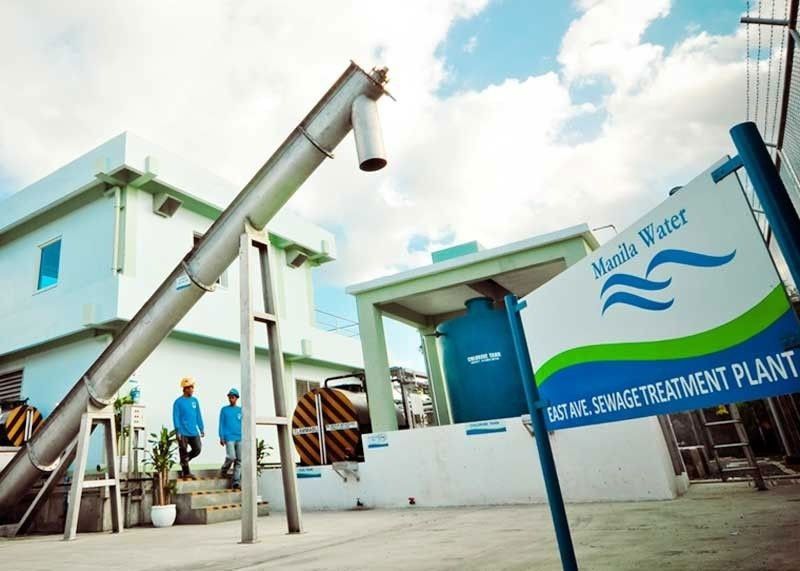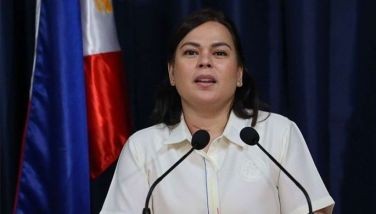Manila Water NRW remains low

MANILA, Philippines — Razon-led Manila Water Company Inc. managed to keep its non-revenue water (NRW) average at 13.35 percent for the first half of the year, allowing it to sustain 24/7 supply to its customers in the east zone.
NRW is defined as water that is not billed and is lost through leaks and illegal connections.
Manila Water said that for every liter of water it produces, only less than 140 ml-or less than half a cup-is lost.
Its first half average NRW is way below the 25 percent standard set by the World Bank and remains one of the lowest in Asia, putting it at par with first-world countries such as Japan, Germany, England and Wales, and Singapore.
Manila Water said keeping the NRW level at this rate along with the various water augmentation projects allows it to provide continuous and uninterrupted water service despite the reduced water allocation from Angat Dam, which is now at 48 cubic meters per second.
“Despite the reduced allocation due to the declining water level in Angat Dam and with the onset of El Niño, our current projections still confirm that our water augmentation projects, coupled with our low NRW can bridge this deficit and help us supply uninterrupted water supply to our customers,” Manila Water corporate communications group director Jeric Sevilla said.
Manila Water said it has been maintaining its NRW average below 14 percent by implementing vigorous maintenance checks, replacement, rehabilitation, and repairs in its more than 5,300-kilometer distribution network.
To eliminate or reduce illegal connections that are rampant in informal settlements, Manila Water launched its flagship program, Tubig Para Sa Barangay or Water for the Community program in 1998.
The program has completed almost 900 projects benefitting nearly two million people from urban poor communities.
Aside from keeping the NRW level in check, Manila Water also has completed extensive projects in augmenting its water supply during El Nino.
Since 2019, the water concessionaire has embarked on the construction and operationalization of auxiliary water sources adding to the Angat Dam allocation.
At present, Manila Water uses the Cardona water treatment plant with 110 million liters per day (MLD), Alat reservoir rain catchers with 10 MLD, backwash recovery from water treatments plants with 30 MLD, and deepwells than can produce up to 118 MLD.
New and additional water supply will come from Wawa-Calawis water supply project phase 1 with 20 MLD (scalable to 80 MLD), Marikina portable treatment plant with 15 MLD and Eastbay water treatment plant phase 1 with 50 MLD.
Even with augmentation measures in place, Manila Water reiterated its call for responsible use of water.
“Water is not an unlimited resource and must be used very wisely and responsibly. The best time to save is now while we still have it. Remember that the most expensive water is when you have no water at all,” Sevilla said.
Meanwhile, Maynilad Water Services Inc. said it is optimistic that it can facilitate the implementation of its capital expenditure (capex) projects that are essential to enhancing service reliability, including those that will help to mitigate the effects of El Niño.
The company vows to deliver its P163 billion water and wastewater capex projects from 2023 to 2027.
Part of this spending is P16.5 billion, which will be allocated to bring down the firm’s water losses to 25 percent by 2027 as set by World Bank. The water company ended 2022 with a NRW level of 43 percent from 68 percent in 2006.
Maynilad president and CEO Ramoncito Fernandez said the water sector now has “a valuable ally” in furthering its goal of improving water services through the Water Resource Management Office (WRMO) of the Department of Environment and Natural Resources (DENR).
Besides promoting synergies among the various government agencies involved in water, Fernandez said the water concessionaires now has the WRMO to help in getting its concerns prioritized.
Fernandez said water concessionaires are often the ones who have to give way to road or rail projects – rather than the other way around – even if doing so will involve the realignment of existing underground infrastructure and disrupt water service for customers.
“We are very happy that we now have an ally in WRMO,” he said.
Last April, President Marcos signed Executive Order (EO) 22 creating the WRMO to manage the Philippines’ water resources and respond to the current environmental challenges through integrated government efforts.
Under EO 22, all water-related agencies will be attached to the DENR, among which are the National Water Resources Board, Metropolitan Waterworks and Sewerage System, Local Water Utilities Administration and the network of local water districts, and the Laguna Lake Development Authority.
- Latest
- Trending





























